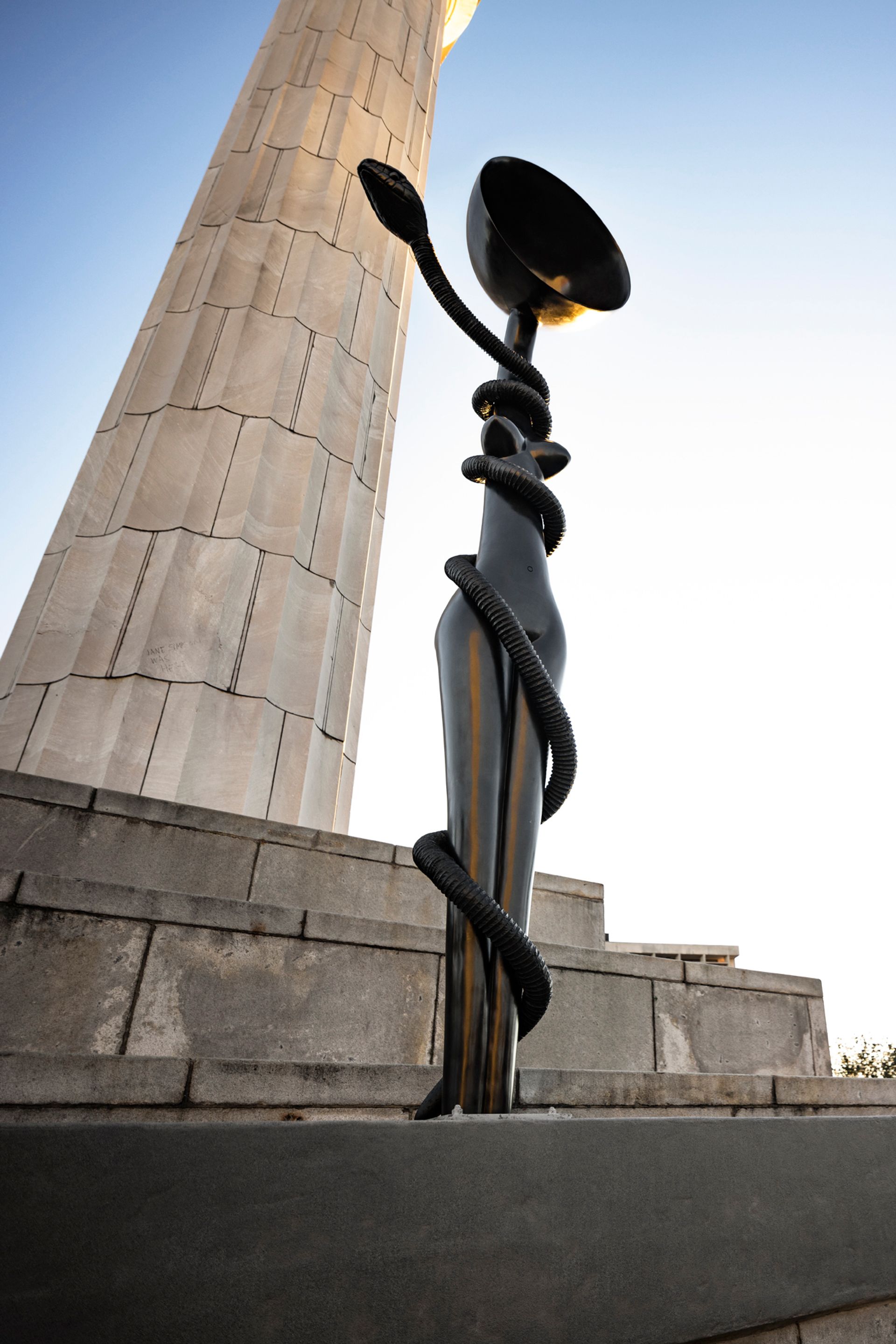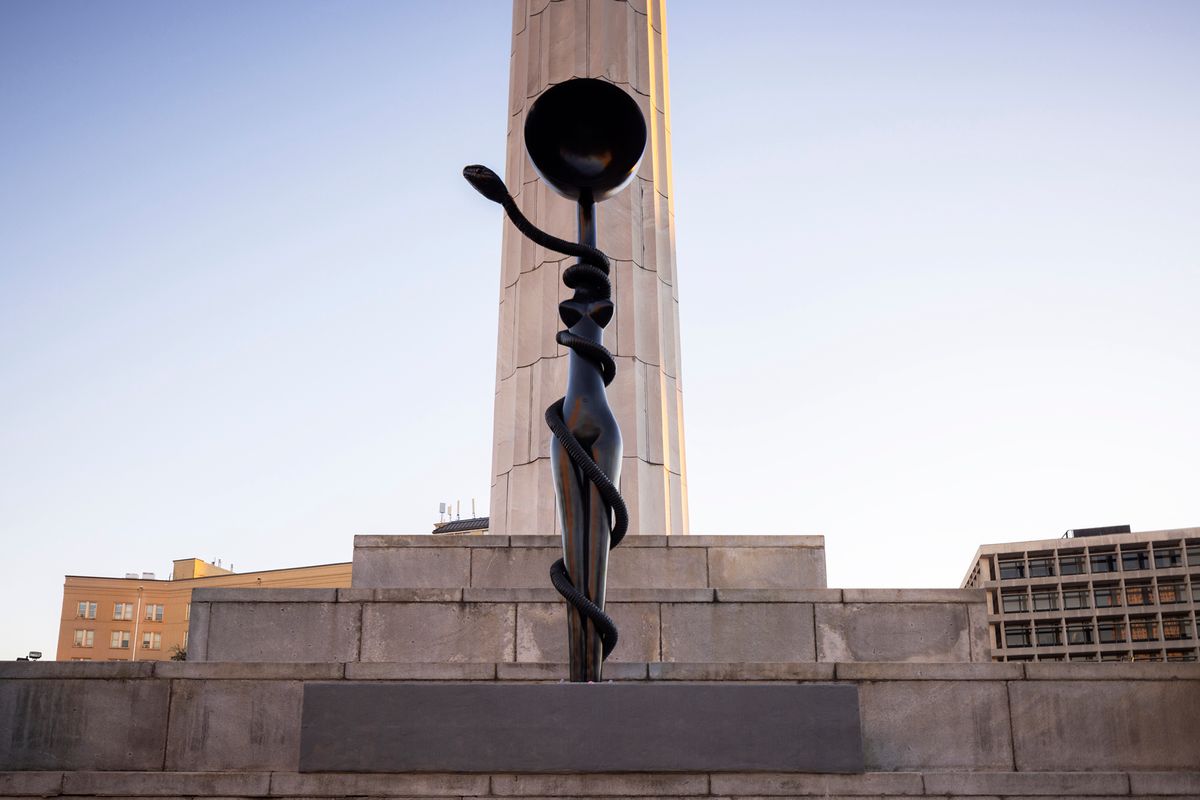Where a towering monument to Confederate general Robert E. Lee formerly loomed over a central traffic circle in New Orleans, now a sculpture of an African deity holds court. The sculpture Sentinel (Mami Wata) (2020-21) by Simone Leigh, the celebrated artist representing the US at this year’s Venice Biennale, was unveiled on 22 January at the base of the column upon which the Lee statue once stood in the centre of a traffic circle formerly known as Lee Circle. The work’s installation was part of the final weekend of programming for the fifth edition of the Prospect New Orleans triennial, curated by Naima J. Keith and Diana Nawi.
“The Robert E. Lee monument was a menacing white supremacist presence that loomed over the city; this placement is a rejection of that symbolism,” the co-curators said in a joint statement. “The decision to temporarily place Simone’s work at the base of the pedestal points to the desire for new monuments to emerge from artist practices, the public’s imagination, the work of activists and the breadth of cultural practices that define this city.”
Leigh’s sculpture represents Mami Wata, a water deity or spirit who recurs across multiple African diasporic communities (sometimes under other names, such as Yemaya). The invocation of a water deity is especially fitting in a city to which sea level rise poses an existential threat. The work’s form is based on the shape of a ceremonial spoon, a symbol of status in Zulu culture, which has strong ties to New Orleans, including by way of the Zulu Social Aid and Pleasure Club, one of the oldest and best-known Black Carnival organisations in the city.

Simone Leigh, Sentinel (Mami Wata) (2020–21) Courtesy the artist and Matthew Marks; photo by Alex Marks
The site’s bronze Lee statue was the last of four prominent monuments to Confederate and white supremacist figures and events taken down around New Orleans in 2017. It had stood atop a column around 60ft-tall since 1884. Efforts to rename the surrounding green space—located steps from several of the city’s leading institutions, including the Ogden Museum of Southern Art, the Contemporary Arts Center and National WWII Museum—something other than Lee Circle have dragged on for years. Last year the New Orleans city council’s street renaming commission recommended changing the name to Égalité Circle in recognition of the city’s linguistic ties to French and Haitian Creole.
The sculpture is part of the “Monuments: A Proposal” section of Prospect.5, which was supported by a Mellon Foundation grant and included a total of five public art commissions throughout the city that sought to grapple with the future of public statuary both in the city—where ten Confederate monuments still stand—and throughout the US.
“As so much of Prospect.5 considers the entanglement of the past and present, we felt it was important to reconsider the role of monuments and monumentality in holding historical narratives and communicating them in the public sphere,” Keith and Nawi said. “Simone’s piece acts as a powerful conclusion to Prospect––it encodes layers of knowledge and heritage of the African diaspora, containing history within in its form, offering a clear vision of the present and opening up conversations for the future.”
Leigh’s statue will remain on view until 22 July, and will be followed by other artistic interventions.


